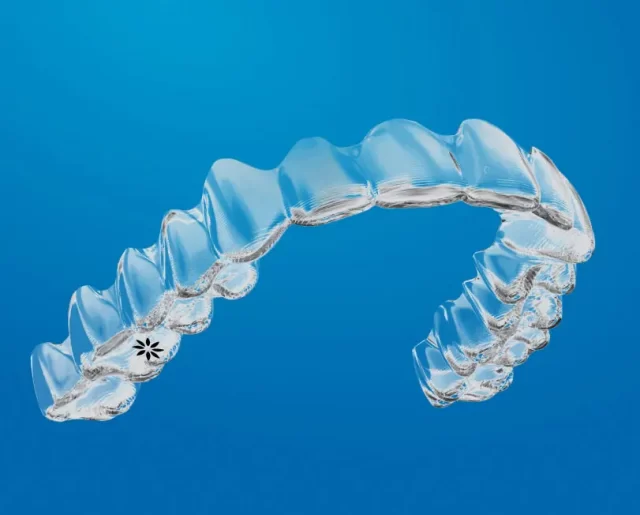Traditional braces and Invisalign aligners are two popular orthodontic treatments. They are different in a lot of ways but they do share a common trait – treatment time.
Treatment time plays a big role when it comes to teeth alignment, raising the question; are traditional braces faster than Invisalign or vice versa?
Read more: Invisalign vs Braces: Which Is Better for You?
Traditional Braces vs Invisalign: Which is Faster?
Everyone wants to get their teeth aligned as fast as possible. But the sad truth is, both treatments take a considerable amount of time to achieve optimal results. There are also various factors that influence treatment time:
Severity of Misalignment
The extent of misalignment plays a crucial role. Severe cases may require longer treatment regardless of the method used. This includes excessive crowding, crooked or significant gaps.
All these factors can make the treatment more challenging and time consuming.
Compliance
Both dental appliances require consistent wear for effective results. You must maintain your braces as instructed by your dentist. This includes going for your regular check ups and adhering to any specific care instructions.
On the other hand, not using your aligners consistently can lead to setbacks in your treatment.
Age
Age can impact the speed of orthodontic treatment. In general, younger patients may see faster results as their jaws are still growing. This makes their tooth movement more malleable.
Treatment Plan
Each case is unique and everyone will have different treatment plans. Some cases require more complex movements, which can extend the time needed to achieve desired results.
On the other hand, some cases involve relatively straightforward tooth movements. This can cut the treatment period by a considerable amount of time.
Bone Density
The density of your jawbone can impact how quickly your teeth move into their new positions. Patience with denser bones may experience slower progress compared to those with less dense bone.
All these factors will have a significant impact on the duration of your treatment. However, a rough estimate for braces and Invisalign treatment time is 2 to 3 years.
The amount of tooth movement is due to the forces applied; and Invisalign allows for more targeted and controlled tooth movement. But this may vary based on the factors above, which could put braces at an advantage. All in all, always consult your orthodontist to find the right solution for your treatment.
Living With Braces or Invisalign
Living with traditional braces or clear aligners requires adjustments and lifestyle changes. Here is what it is like living with either one:
Living With Braces
Dietary Restrictions
With braces, you will need to be more mindful of what you eat. Sticky, hard or chewy foods can damage the brackets and wires, leading to longer treatment time.
Hard food like apples and steaks may need to be cut into smaller pieces to avoid damaging your braces.
Oral Hygiene
Proper oral hygiene becomes even more crucial with braces. Food particles can easily get trapped in the brackets and wires. This can lead to plaque buildup, cavities and even gum diseases.
Regular brushing and flossing after meals is essential.
Discomfort
Braces can cause some discomfort, especially after adjustments. You may experience soreness or irritation in your mouth. This can last up to several days depending on your tolerance.
Regular Adjustments
You will need to visit your orthodontist regularly for adjustments. This can be every 4-6 weeks or if you feel the need to get checked. These appointments are essential for your overall treatment progress.
Living With Invisalign
Removable Aligners
One of the main advantages of Invisalign is that the aligners are removable. This means you can take them out for eating, brushing and flossing.
You will be able to maintain your regular routine and enjoy your favourite foods without restrictions.
Minimal Impact on Lifestyle
Invisalign aligners will have minimal impact on your appearance since they are virtually invisible. You can feel more confident while speaking in social and professional settings.
Comfort
Invisalign aligners are made of smooth, comfortable plastic. They are less likely to cause irritation or sores compared to traditional braces.
However, some people may experience temporary discomfort or pressure when switching to a new set of aligners.
Compliance
Success with Invisalign depends on wearing the aligners for at least 20-22 hours per day.
While the removable nature of Invisalign offers flexibility, it also requires discipline to ensure you wear them as recommended for optimal results.
Conclusion
So, are traditional braces faster than Invisalign? Probably not. But they can be, given the complexity of your case and various other factors. Ultimately, the decision between braces and Invisalign should be made in consultation with a professional.
We will advise you regarding the right plan and how long the treatment time will take. So take that first step towards a better smile and contact us to find out more!










